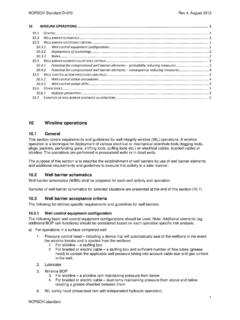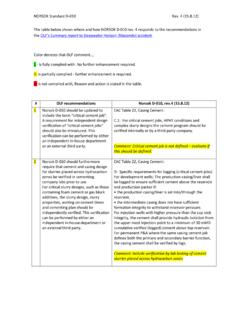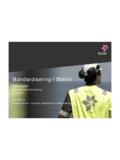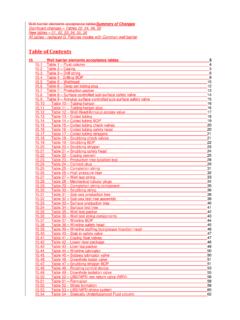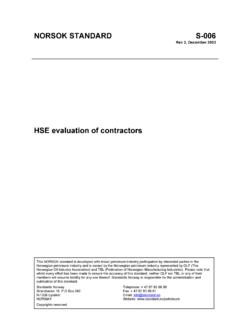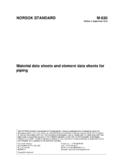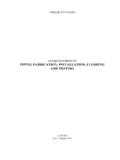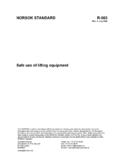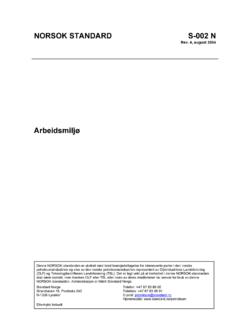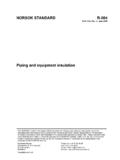Transcription of NORSOK STANDARD R-002
1 NORSOK STANDARD R-002 . Draft Edition 2, June 2011. Lifting equipment WARNING. The hearing period for this STANDARD is closed and the document is currently being updated based upon the comments that have been received. The draft edition of the STANDARD is made available in the interim period. Please be aware that the final version will contain modifications compared to this draft edition. This NORSOK STANDARD is developed with broad petroleum industry participation by interested parties in the Norwegian petroleum industry and is owned by the Norwegian petroleum industry represented by The Norwegian Oil Industry Association (OLF) and The Federation of Norwegian Industry. Please note that whilst every effort has been made to ensure the accuracy of this NORSOK STANDARD , neither OLF nor The Federation of Norwegian Industry or any of their members will assume liability for any use thereof.
2 standards Norway is responsible for the administration and publication of this NORSOK STANDARD . standards Norway Telephone: + 47 67 83 86 00. Strandveien 18, Box 242 Fax: + 47 67 83 86 01. N-1326 Lysaker Email: NORWAY Website: Copyrights reserved NORSOK STANDARD R-002 Draft Edition 2, June 2011. Foreword 5. Introduction 5. 1 Scope 7. 2 Normative and informative references 7. Normative references 7. Informative references 9. 3 Terms, definitions and abbreviations 10. Terms and definitions 10. Abbreviations 13. 4 General safety requirements 14. Safety 14. Fitness for use 14. Reliability and availability 14. Principle of safety integration 14. Inherently safe design measures 15. Safeguarding and complementary protective measures 15. Information for use 15. Strength proportion 15. Maintenance 15.
3 Quality management system 16. Risk assessment 16. Risk reduction 18. Documentation of risk assessment 18. Verification 18. Qualification of new technology 18. 5 Common requirements 19. Suitability 19. Materials and products 19. Fire and explosion 19. Ergonomics 20. Environmental conditions 22. Operational loads 23. Strength and stability structure and mechanisms 23. Strength and stability classification 24. High risk applications 24. Power systems 24. Electro technical equipment 24. Non-electro technical equipment 24. Controls, control stations and control systems 24. Limiting and indicating devices 25. Emergency systems 25. Communication 26. Pneumatics 26. Hydraulics 26. Electromagnetic compatibility (EMC) 26. Exhaust and noise emissions 26. Utility systems 27. Fabrication 27. Installation and assembly 27.
4 Corrosion protection 27. Technical construction file 27. Annex A (Normative) Launching and recovery appliances for life saving equipment 29. Annex B (Normative) Material handling principles 76. Annex C (Normative) Lifting accessories Group (G11) 83. Annex D (Normative) Lifting equipment in drilling area 107. NORSOK STANDARD Page 3 of 173. NORSOK STANDARD R-002 Draft Edition 2, June 2011. Annex E (Normative) Elevators and lifts 119. Annex F (Normative) Portable units 121. Annex G (Normative) Cranes 136. Annex H (Normative) Foundations and suspensions 149. Annex I (Informative) Selection of elastic pennant Calculation example 157. Annex J (Informative) Lifting lugs and mating shackles 161. NORSOK STANDARD Page 4 of 173. NORSOK STANDARD R-002 Draft Edition 2, June 2011. Foreword The NORSOK standards are developed by the Norwegian petroleum industry to ensure adequate safety, value adding and cost effectiveness for petroleum industry developments and operations.
5 Furthermore, NORSOK standards are, as far as possible, intended to replace oil company specifications and serve as references in the authorities' regulations. The NORSOK standards are normally based on recognised international standards , adding the provisions deemed necessary to fill the broad needs of the Norwegian petroleum industry. Where relevant, NORSOK . standards will be used to provide the Norwegian industry input to the international standardisation process. Subject to development and publication of international standards , the relevant NORSOK STANDARD will be withdrawn. The NORSOK standards are developed according to the consensus principle generally applicable for most standards work and according to established procedures defined in NORSOK A-001. The NORSOK standards are prepared and published with support by The Norwegian Oil Industry Association (OLF), The Federation of Norwegian Industry, Norwegian Shipowners' Association and The Petroleum Safety Authority Norway.
6 NORSOK standards are administered and published by standards Norway. This STANDARD is published in two steps. The final STANDARD is planned to contain the following annexes: Annex A: Launching and recovery appliances for life saving equipment Annex B: Material handling Annex C: Lifting accessories Annex D: Drilling hoisting equipment Annex E: Lifts Annex F: Portable units Annex G: Cranes Annex H: Foundations and suspensions Annex I: Selection of elastic pennant calculation example Annex J: Lifting lugs and mating shackles Introduction The main purpose of this NORSOK STANDARD is to contribute to an acceptable level of safety for humans, the environment and material assets in the petroleum industry by giving technical requirements for lifting equipment. During development of this NORSOK STANDARD , due consideration has been given to relevant EU Directives, Norwegian regulations, European STANDARD and International STANDARD , as well as other formal documents of relevance.
7 It should be noted, however, that this NORSOK STANDARD is not a harmonised STANDARD , and it does not contain all the technical and administrative requirements of the applicable regulations and directives, see the foreword. The expert group responsible for this NORSOK STANDARD has agreed that the main safety philosophy and principal requirements of the STANDARD shall be based on applicable safety and health requirements stated in relevant EU directives, the Machinery directive (2006/42/EC), ATEX directive (94/9/EC), LVD. (2006/95/EC), EMC directive (2004/108/EC), PED (97/23/EC). This applies regardless of type of installation or unit on which lifting equipment is installed. Administrative requirements, however, ( CE marking, declaration of conformity, requirements for EC Type-examination, etc.)
8 Do not form part of this NORSOK . STANDARD . The requirements of this NORSOK STANDARD are given in clause 4, clause 5 and in the annexes. The combination of all these requirements forms the technical basis the lifting equipment has to comply with. In case of conflict between similar, but not identical requirements, the requirements of the annexes prevail over the common requirements of clause 5, which in turn prevails over the safety requirements of clause 4. NORSOK STANDARD Page 5 of 173. NORSOK STANDARD R-002 Draft Edition 2, June 2011. However, this general rule may only be waived if the manufacturer makes use of a recognised solution and documents by means of a risk assessment that said solution gives an equal or better safety level than the conflicting requirement. NORSOK STANDARD Page 6 of 173.
9 NORSOK STANDARD R-002 Draft Edition 2, June 2011. 1 Scope This NORSOK STANDARD is valid for lifting equipment on all fixed and floating installations, mobile offshore units, barges and vessels, as well as on land based plants where petroleum activities are performed. NOTE For the use of lifting equipment, reference is made to NORSOK R-003 and NORSOK R-005. 2 Normative and informative references The following standards include provisions and guidelines which, through reference in this text, constitute provisions and guidelines of this NORSOK STANDARD . Latest issue of the references shall be used unless otherwise agreed. Other recognized standards may be used provided it can be shown that they meet the requirements of the referenced standards . Normative references CEN/TS 13001-3-1, Cranes General design Part 3-1: Limit states and proof of competence of steel structures CEN/TS 13001-3-2, Cranes General design Part 3-2: Limit states and proof of competence of wire ropes in reeving systems 1.
10 PrCEN/TS 13001-3-3 , Cranes General design Part 3-3: Limit states and proof of competence of wheel/rail contacts 2. FprCEN/TS 13001-3-5 , Cranes - General design Part 3-5: Limit states and proof of competence of forged hooks Directive 97/68/EC, Directive of the European Parliament and of the Council of 16 Decmber 1997on the approximation of the laws of the Member States relating to measures against the emission of gaseous and particulate pollutants from internal combustion engines to be installed in non-road mobile machinery, amended by Directives 2001/63/EC, 2002/88/EC, 2004/26/EC and 2006/105/EC. DNV STANDARD for certification of lifting appliances, No. , IEC 61000-6-4, Electromagnetic compatibility (EMC) Part 6-4: Generic standards - Emission STANDARD for industrial environments rd FEM , 3 edition 1998, Rules for the design of hoisting appliances IEC 60034, Rotating electrical machines IEC 60204-1, Safety of machinery Electrical equipment of machines Part 1: General requirements IEC 60204-32, Safety of machinery Electrical equipment of machines Part 32: Requirements for hoisting machines IEC 60300-3-11, Dependability management Part 3-11: Application guide Reliability centred maintenance IEC 60529, Degrees of protection provided by enclosures (IP Code).

